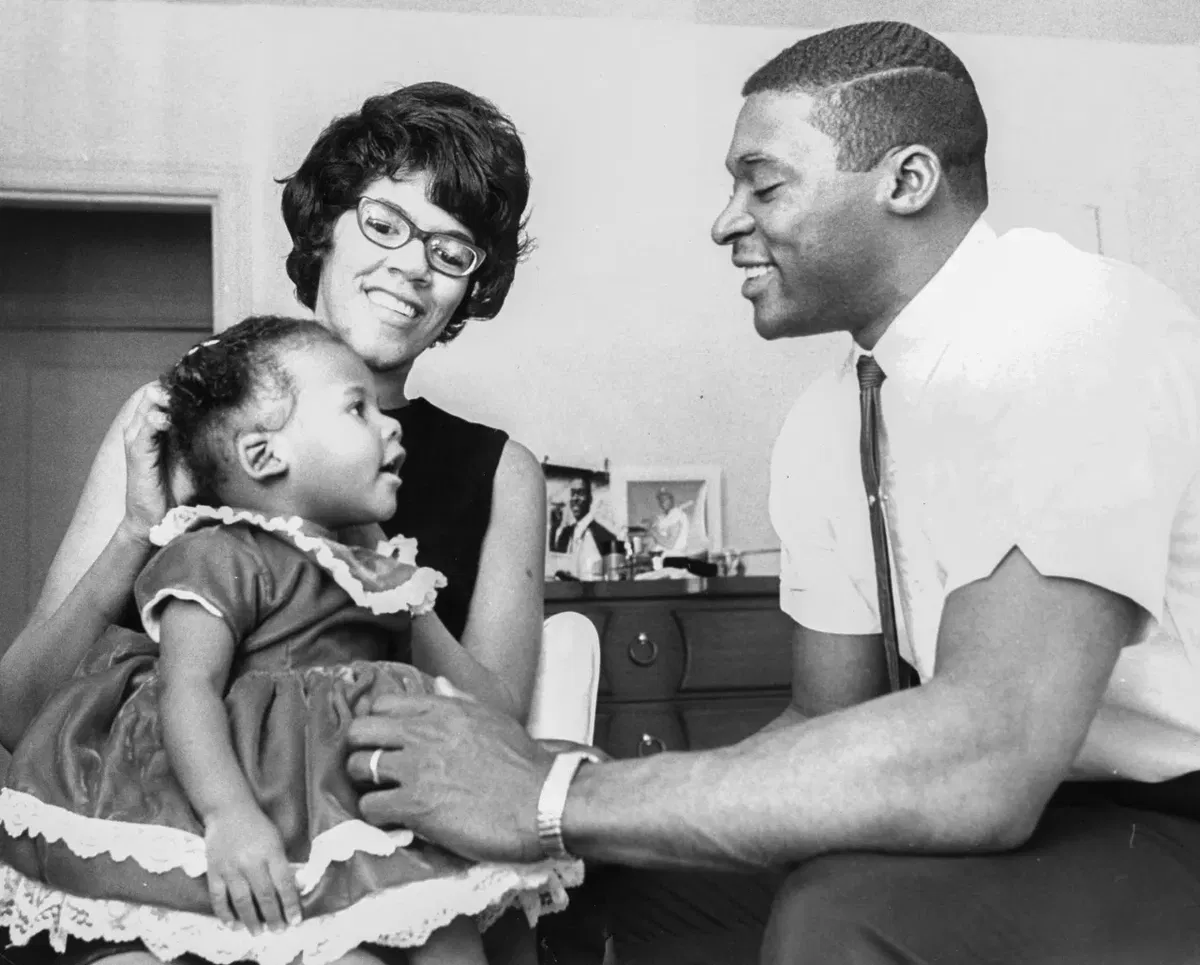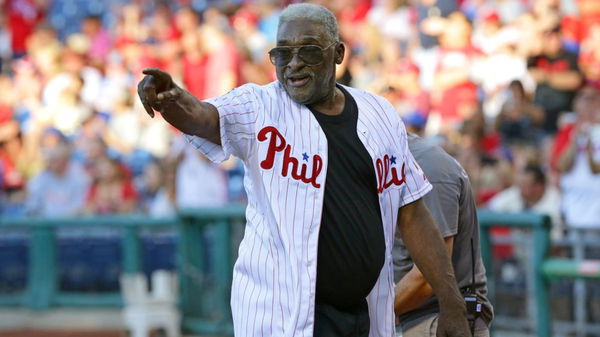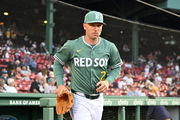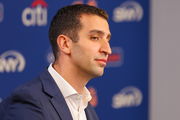
Imago
National League Rookie of the Year Phillies third baseman Dick Allen with wife Barbara and their daughter Terry on Nov. 30, 1964 in Philadelphia. (UPI)

Imago
National League Rookie of the Year Phillies third baseman Dick Allen with wife Barbara and their daughter Terry on Nov. 30, 1964 in Philadelphia. (UPI)
Some stories aren’t told in highlight reels or Hall of Fame speeches; they expand within shadows. They remind us that even legends with 42-ounce bats can’t swing away real-life grief. For all the power Dick Allen displayed at the plate, life delivered a blow he never saw coming. Behind the iconic home runs was a father named Dick—and a daughter named Terri—whose story ends far from the scoreboard.
Watch What’s Trending Now!
Life doesn’t hand out fairness like candy, and hearts get shattered without warning or reason. Terri Allen‘s story ended too soon, stolen by violence that arrived like a midnight storm. In May of 1991, tragedy crept into the Allen family like a thief in the darkness. Terri Allen, the vibrant daughter of baseball legend Dick Allen, was murdered in cold blood. Shot in the back by Clarence E. Ford, her life was stolen without mercy or meaning. She was just 27—youthful energy extinguished in a Maryland parking lot without warning.
The house didn’t grieve quietly—it shattered in silence, echoing with the weight of absence. Dick Allen, learning the news, trashed his hotel room in a storm of heartbreak and rage. When told the shooter died by suicide, Allen muttered, “Just as well… Because I would’ve been looking for him.” Grief didn’t arrive gently—it bulldozed through the walls and stayed like an unpayable debt.
ADVERTISEMENT
Terri wasn’t just his daughter—she was his joy, his echo, his loudest cheer in silence. She’d hang over his shoulders in the car, covering his eyes, giggling just to say “Dad’s home.” Her brother called her “his biggest fan,” but Dick wore that love like armor and light. And when Mike Tollin came over, Dick said nothing—they just shot hoops and ultimately cried.

Imago
Source: MLB Daily Dish
After Terri’s death, the legend’s light dimmed—baseball no longer offered comfort, only reminders. Mike DiMuzio said, “You could just feel that something was missing from Dick when she was gone.” Yet even sorrow couldn’t stop a flicker of joy: a grandson born years later reminded him of her. Laughing with chili in hand, Dick whispered, “Because you know, I’m El Cheapo”—a joke, a memory, a scar still smiling.
ADVERTISEMENT
But there are no stat sheets for sorrow, and no MVP awards for surviving loss. Terri Allen’s absence echoed louder than any cheer Dick ever earned in Philadelphia. Baseball gave him headlines—grief gave him depth. Now, as Dick Allen finally enters the Hall of Fame, we’re reminded: even legends cry in silence. And sometimes, the man called “El Cheapo” paid more than life ever had the decency to charge.
ADVERTISEMENT
Fans were not the only ones advocating for Dick Allen to be in the Hall of Fame
Baseball’s gatekeepers have never been in a rush to rewrite their own mistakes—especially when the math doesn’t fit the mythology. While MLB’s history books kept Dick Allen in the margins, the metrics were screaming in bold font. Turns out, it wasn’t just veteran writers or cranky ex-players crunching numbers this time. The push for justice came from somewhere far less traditional—and far more compelling.
In a quiet corner of Milwaukee, high school students challenged Cooperstown with cold, undeniable data. The Sports Analytics Club at Golda Meir School turned Dick Allen’s overlooked greatness into a math-driven manifesto. What began as a stats project became a mission to restore justice using charts and code. “Hey, this guy was really good,” said math teacher David Benz—turns out, understatement can be revolutionary.
Top Stories
Mark Shapiro Rubs Salt in Yankees’ Wounds as He Issues Stark Ultimatum to Blue Jays Clubhouse

Ross Atkins Warned Against Alex Bregman’s Misstep as 2 Blue Jays World Series Heroes Face Exit

Red Sox–Cubs Hit Major Offseason Roadblock as Mariners GM Pushes for $66M Reunion

Red Sox’s Patience With Alex Bregman Fades as D-Backs’ $116.5M Star Emerges as Backup Amid Blue Jays Buzz: Insider

Mets & David Stearns Forced to Battle Reds Threat as White Sox Ready to Let Go $50M Star

The club’s portfolio compared Allen’s numbers to Hall of Famers, stripping away name and bias alike. “Does he, or does he not deserve to be inducted?” asked student Chaim Robinson, bluntly. When the anonymous legend became Dick Allen, context clashed with cold stats—and the debate began. Yet their findings, mailed to MLB’s Hall of Fame, echoed loud enough to matter by April 2024.
ADVERTISEMENT
What they learned wasn’t just WAR stats or slugging percentages—it was how stories hide behind spreadsheets. “There’s more to statistics than just the numbers,” said teacher Lauren Jagemann, noting their growth. They learned about baseball, civil rights, injustice—and the power of a well-timed graph. For Benz, it was “affirming that what the students could do with data could matter.”
In the end, Cooperstown didn’t just open its doors—it caught up to its own scoreboard. When high schoolers have to correct baseball’s historians, maybe it’s time to retire the myths. The numbers were always there; it just took teenagers with laptops to make them loud enough. Dick Allen’s legacy wasn’t rescued by nostalgia—it was rescued by evidence. And baseball, bless its stubborn heart, finally listened.
ADVERTISEMENT
ADVERTISEMENT
ADVERTISEMENT
ADVERTISEMENT

